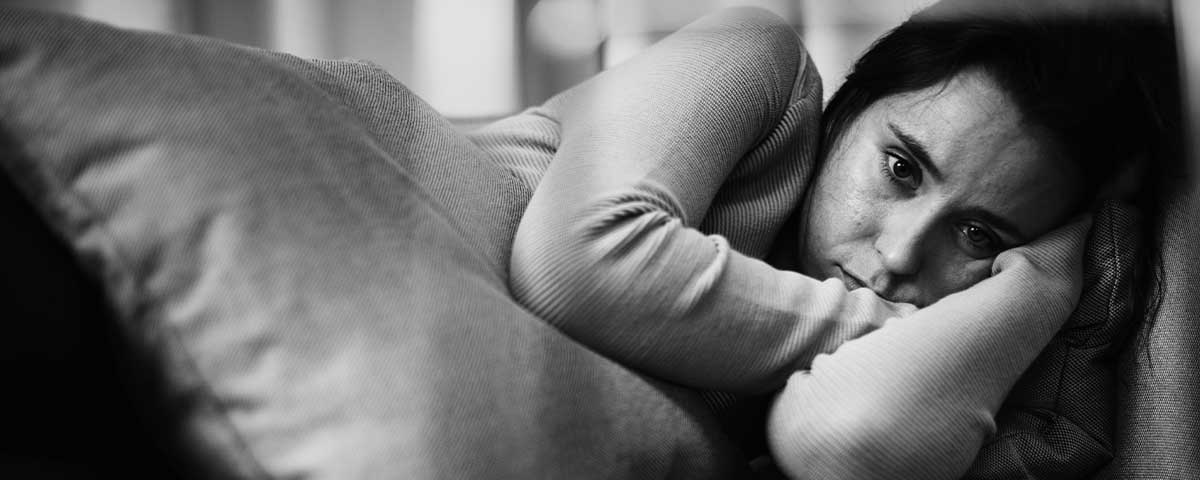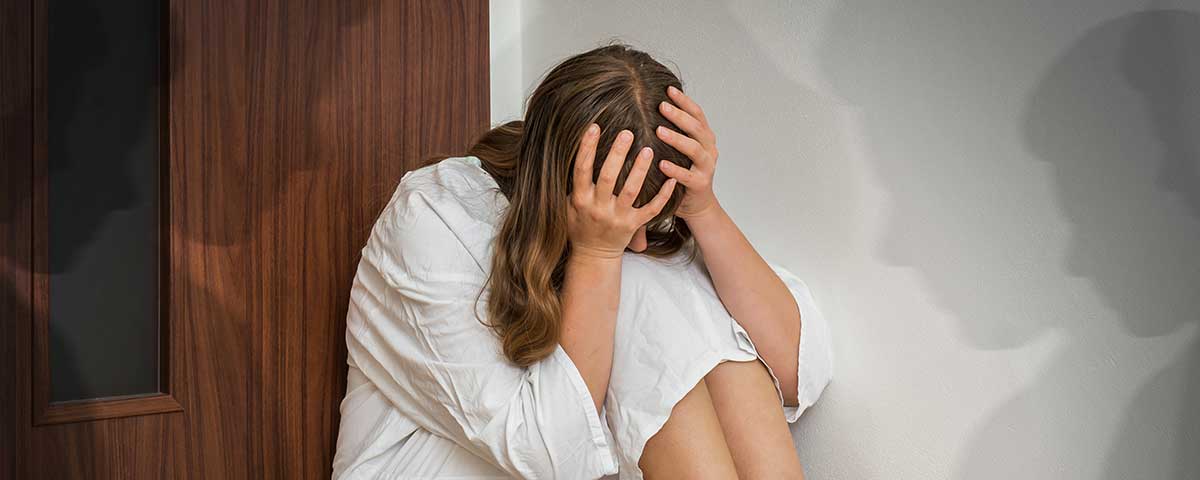


Can Benzodiazepines Cause Depression?
January 3, 2022

What is Catatonic Schizophrenia?
January 10, 2022Words on Bathroom Walls”: What It Got Right and Wrong About Schizophrenia


Based on Julia Walton’s novel of the same name, “Words on Bathroom Walls” is a coming-of-age film about a high school senior named Adam, who’s diagnosed with schizophrenia after a psychotic break in Chemistry class. After being expelled from one school, Adam undergoes a medical trial to manage his symptoms and transfers to a new private high school. There, he meets Maya, an over-achieving soon-to-be valedictorian who agrees to tutor Adam as he struggles to maintain his GPA. Throughout the movie, we, the viewers, are exposed to Adam’s struggles with schizophrenia as he balances new medication and a budding romance. Similar to our review on how schizophrenia was portrayed in “A Beautiful Mind,” today we’re sharing what the “Words on Bathroom Walls” movie got right and wrong about schizophrenia.
What “Words on Bathroom Walls” Got Right About Schizophrenia
Schizophrenia is a mental disorder characterized by symptoms like delusions, hallucinations, disorganized speech, difficulty thinking, and lack of motivation. In “Words on Bathroom Walls,” Adam, the main character, partially narrates the movie talking to his psychiatrist, which is us, the viewers.
Whenever he’s assumed to be speaking to his therapist, he’s speaking straight to the camera, offering the viewers insight into his private thoughts. Although it can be difficult to portray mental disorders like schizophrenia accurately on film, below are some things that “Words on Bathroom Walls” got right about mental illness.
Symptoms of Schizophrenia in Teens
One thing that this movie got right about schizophrenia is the onset of symptoms at a young age. The symptoms of schizophrenia most commonly manifest themselves in childhood to teen years.
Early schizophrenia symptoms in adolescence can be difficult to spot - simply because it’s hard to tell which symptoms are the result of hormonal mood swings or an actual disorder. One thing that “Words on Bathroom Walls” gets right about schizophrenia is the confusion that’s related to the onset of these symptoms in teenagers, as well as the symptoms themselves.
Adam wasn’t diagnosed with schizophrenia in the movie until after he experienced a psychotic break in the middle of class. Up until then, there were certain indicators of a problem that had been brushed off until his psychotic break.
Some early symptoms of schizophrenia in adolescence that were accurately portrayed in “Words on Bathroom Walls” include:
- Lack of concentration or difficulty following a train of thought
- Seeing or hearing things that aren’t real (hallucinations)
- Confusing dreams with reality
- Strange ideas that may not make sense (like thinking an evil spirit possess them)
- Paranoia
- Dwelling on the past
- Being extremely moody or irritable
- Angry outbursts
- Severe fearfulness or anxiety
- Talking to themselves
- Inappropriate responses, such as laughing during a sad movie
- Problems making and keeping friends
- Isolating themselves from loved ones
Stigma and Stereotypes
In addition to portraying certain schizophrenia symptoms well, “Words on Bathroom Walls” also does a great job at portraying stigma. At home, Adam’s stepdad Paul hides kitchen knives and “tiptoes” around him simply out of fear and ignorance of the diagnosis. This becomes a significant point of frustration for Adam.
Adam’s mom also takes the role of many parents of children with mental disorders; she dedicates most of her time to finding more solutions and ways to help her son, which is another realistic and all-too-common aspect in the life of someone with schizophrenia.
Additionally, friends or people who knew of Adam’s diagnosis and psychotic break at his previous school wanted nothing to do with him. In one scene of the movie, when Adam and Maya went out, some students from his previous high school commented on his psychotic break, portraying the lack of understanding and compassion among his peers.
This is why Adam kept his diagnosis a secret after transferring to the new school, even from his crush Maya. These elements of the movie do well in portraying the many personal struggles that people with schizophrenia face at home and among their peers.
Challenges With Medication
Another challenge that’s rarely mentioned in the movie is Adam’s challenges with his medication. At the beginning of the movie, Adam begins a medical trial in which he takes a new medication for people with schizophrenia. Before this, no other medications seemed to work for him, an issue that many people with schizophrenia face.
Additionally, although the new medication does help manage certain symptoms, such as the common hallucinations that Adam sees and even the demon-like voice that tells Adam to hurt himself or others, it also begins to affect him in other unforeseen ways.
For instance, Adam has always turned to cooking as a way to manage his symptoms and self-cope. But while he’s a promising chef, side effects of his new medication – such as shaking – make it difficult for him to do something as simple as cutting-up ingredients. As a result, Adam stops taking his medication, and eventually, his symptoms begin to return.
Many people with mental disorders struggle with continuing their medications because of the adverse side effects they may experience. The desire to stop using their prescribed drugs often leads to tension and arguments at home, a problem that’s also portrayed in “Words on Bathroom Walls.”
Compassionate Portrayal of Schizophrenia
Another point that this movie got right about schizophrenia is the portrayal of the disorder itself. Too often, people with schizophrenia are portrayed as violent and aggressive, which has contributed to stigma and misconception concerning this disorder.
Rather than being defined by his diagnosis – which happens all too often to people with mental disorders – Adam is visibly affected by rather than consumed by his diagnosis. His personality remains intact as he struggles with the same feelings that many people with this diagnosis experience: shame, embarrassment, and low self-esteem.
Additionally, rather than being portrayed as an angry and violent person, Adam’s vulnerability as he navigates his condition offers a refreshing and realistic portrayal of what it’s like to live with schizophrenia.
What “Words on Bathroom Walls” Got Wrong About Schizophrenia
While the movie was successful in portraying certain elements, below are some things that “Words on Bathroom Walls” got wrong about schizophrenia.
Not-So-Bad Hallucinations
Although many of the symptoms that Adam experiences throughout the movie are accurate, certain symptoms aren’t up to par, specifically the trio of characters that represent the same three hallucinations that Adam experiences regularly.
There’s incense-wafting hippy chick Rebecca, horny teenager Joaquin, and the Bodyguard, a baseball-bat-wielding thug who shows up if Adam is feeling emotionally vulnerable. While the individuality of these hallucinations is accurate and is often the case in people with schizophrenia, the quirkiness and added humor of these characters can be considered harmful to the portrayal of this condition.
Oftentimes, these hallucinations are disturbing and unwanted. Instead of seemingly funny friends, hallucinations caused by schizophrenia are often disturbing and undesirable. With that said, while these characters may seem too quirky to be entirely accurate, the incessant noise in Adam’s head is effectively portrayed.
Lovey-Dovey Ending
As a coming-of-age story and teen-based movie, “Words on Bathroom Walls” disappointingly ends in high-school movie mode, giving us the usual teenage milestones like Adam’s first kiss, prom night, and parent troubles – all with schizophrenia added on top. It’s obvious that these scenes were meant to tie the movie up in a pretty bow, but it also gives the movie a shallow look, which is a shame, considering how terrifying it can be for people with schizophrenia.
In the end, however, it’s refreshing to see a more compassionate and in-depth depiction of schizophrenia rather than the typical aggressive and misunderstood approach to portraying this condition.
Schizophrenia Treatment
These movie characters with schizophrenia are based on the struggles that people with this condition face every day. Managing schizophrenia or any mental disorder can be difficult without the help of a professional.
If you or someone you know is showing signs of mental illness, don’t wait to reach out for help. Our inpatient mental health rehab offers various programs for all kinds of mental health disorders.
In addition to schizophrenia treatment, we offer services for depression, anxiety, OCD, bipolar disorder, and more. Our team members work one-on-one with patients as well as their family members to promote individual healing and help patients develop a support system at home.
For more information about the treatment methods utilized at our Banyan mental health treatment center, call us today at 888-280-4763.
Related Reading:
What Not to Say to Someone with Schizophrenia
Difference Between Schizoaffective and Schizophrenia







